Dashi is the basic Japanese soup stock used in many Japanese dishes. Learn how to make Awase Dashi at home with umami-packed ingredients like kombu (dried kelp) and katsuobushi (dried bonito flakes).
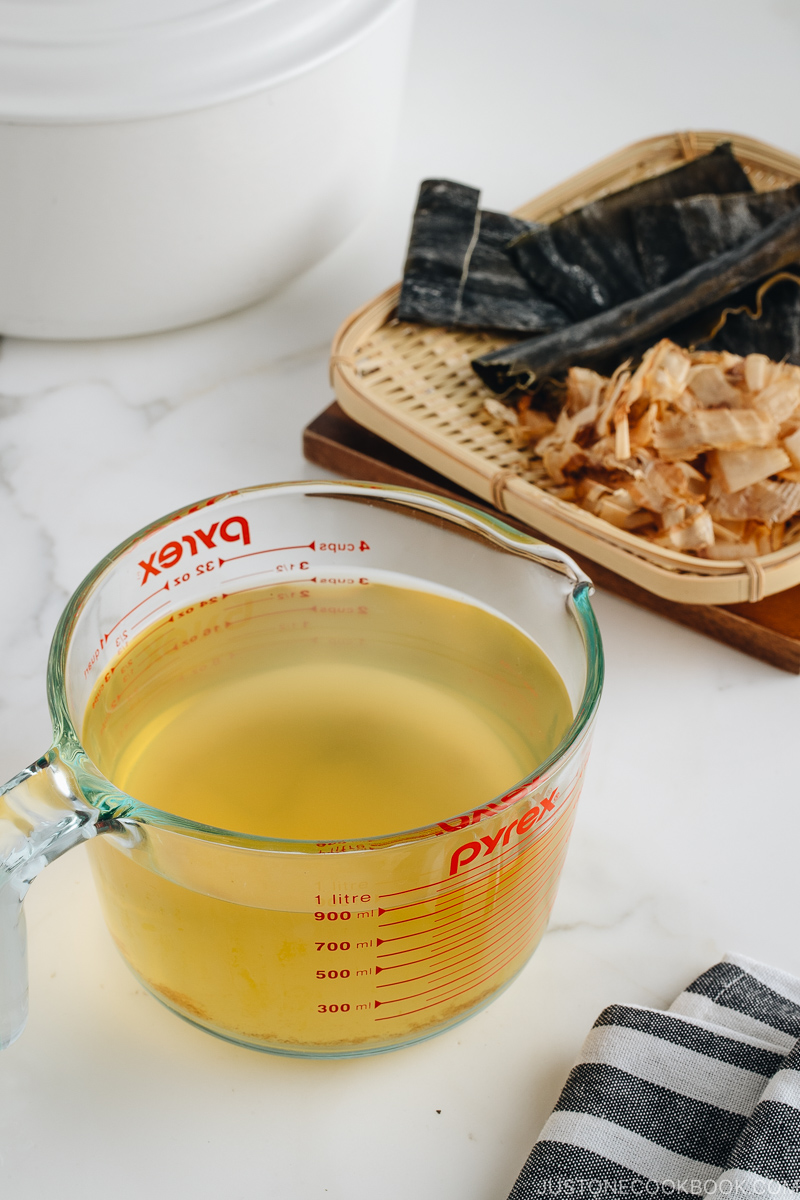
When you decide to make Japanese food, you will realize that a lot of recipes require dashi, Japanese soup stock.
With this unfamiliar ingredient, you may think Japanese food is hard to replicate at home. On the contrary, dashi is actually the easiest soup stock anyone can make from scratch as it requires only 1-2 ingredients and 20-minute prep time. This post shows you how you can make Awase Dashi using a combination of ingredients. Once you learn the ins and outs of dashi making, you’ll be ready to tackle Japanese cooking with a breeze.
Table of Contents
What is Dashi?
Dashi (だし, 出汁) is Japanese soup stock that builds the bases for many of your favorite Japanese dishes like miso soup, chawanmushi, ramen, and shabu shabu. It is the essence of authentic Japanese flavor, and it tells the dishes apart if other substitutions are being used in place of the soup stock. And what defines dashi is the use of carefully selected ingredients like kombu, bonito flakes, shiitake mushrooms, and anchovies, and each ingredient is uniquely Japanese.
In general, there are five different types of dashi (two are vegan). Scroll down to see 5 different types or check out my Ultimate Dashi Guide. When we say “dashi” in Japan, it usually implies Awase Dashi because it’s the most commonly used stock.
Awase Dashi (合わせだし) is made from a combination of kombu (dried kelp) and katsuobushi (dried bonito flakes), and it’s the seafood-based stock. *Awase (合わせ) means “to combine”, “mixed”, or “together.”
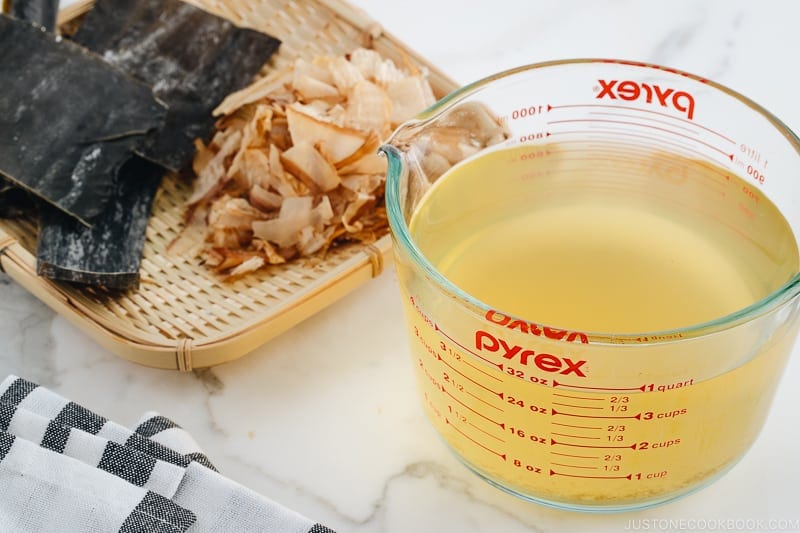
How to Make All-Purpose Basic Dashi
The First Dashi
The base of Awase Dashi is a vegan Kombu Dashi made from dried kelp. You can cold brew or hot brew kombu to make the dashi. Then you would add dried bonito flakes to the kombu dashi. This makes the stock more enriched. When you make dashi from the spent kombu and katsuobushi, it’s called Ichiban Dashi (一番だし). It’s basically the first pure dashi.
The Second Dashi
Niban Dashi (二番だし), or the second dashi is made from the spent kombu and katsuobushi, which you reserved from making Ichiban Dashi. Niban Dashi is a lighter, less intense dashi, yet still provides a great umami flavor despite the previously used ingredients.
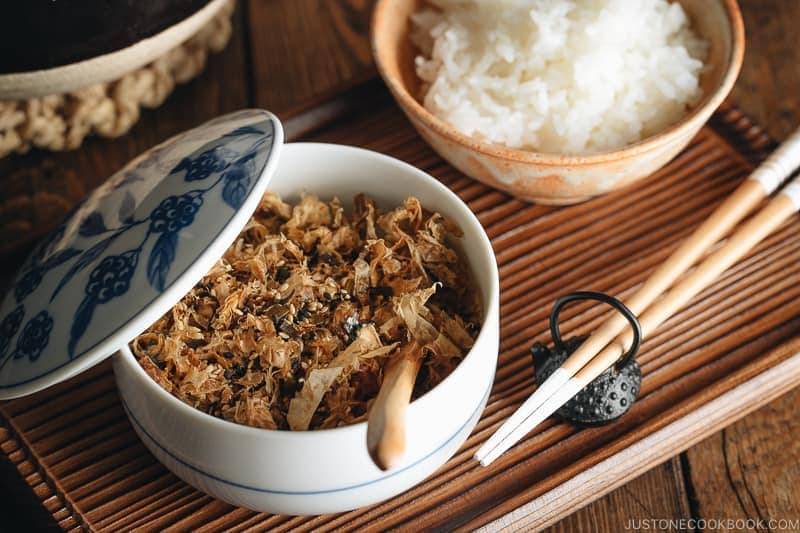
Do we really need to make dashi twice?
At a regular household, we make such a small amount of dashi that it’s not very efficient to make both Ichiban Dashi and Niban Dashi. My suggestion is to make very good Ichiban Dashi and utilize the used kombu and katsuobushi to make Homemade Furikake (rice seasoning) and Kombu Tsukudani (simmered kombu) after collecting enough used kombu and katsuobushi. This way, there will be no waste, and you get another side dish to accompany your meal.
So then who makes Niban Dashi? Japanese restaurants make a huge batch of dashi daily. They use Ichiban Dashi for dishes like Clear Soups (Osumashi おすまし) and Chawanmushi, which require the pure and maximum amount of umami from the dashi ingredients. They typically use Niban Dashi for simmered food (Nimono) and miso soup, which doesn’t require much flavor from the soup stock.
Dashi Shortcut
Sometimes life happens and you just don’t have 20 minutes to make dashi from scratch. On those occasions, you can use Dashi Packet or Dashi Powder.
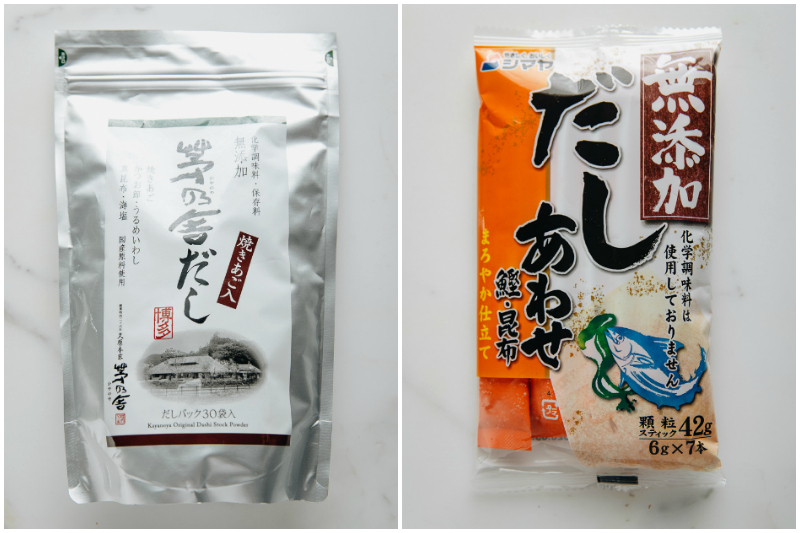
I love using Kayanoya Dashi Packet (left) and Shimaya Dashi Powder (right). Both are MSG-free and additive-free. You can purchase them at Japanese grocery stores or on Amazon:
The instruction on how to use them (recipes) can be found in the Dashi Packet post and Dashi Powder post.
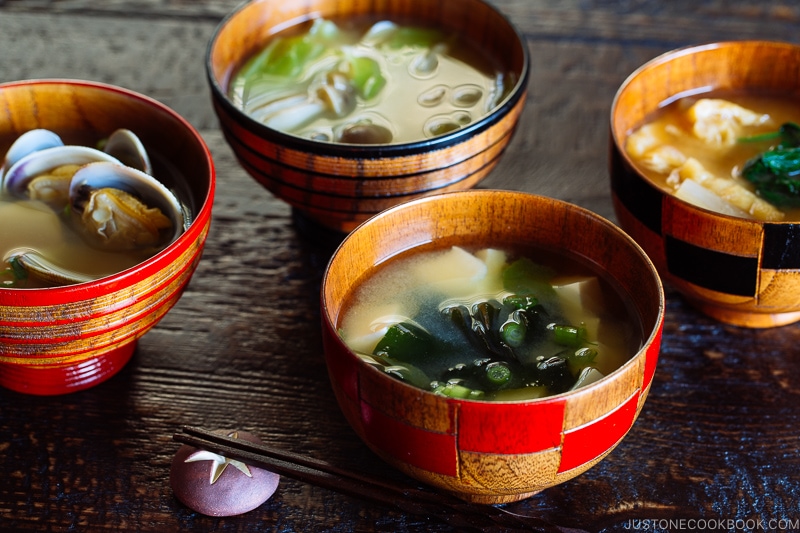
Easy & Delicious Recipes Using Dashi
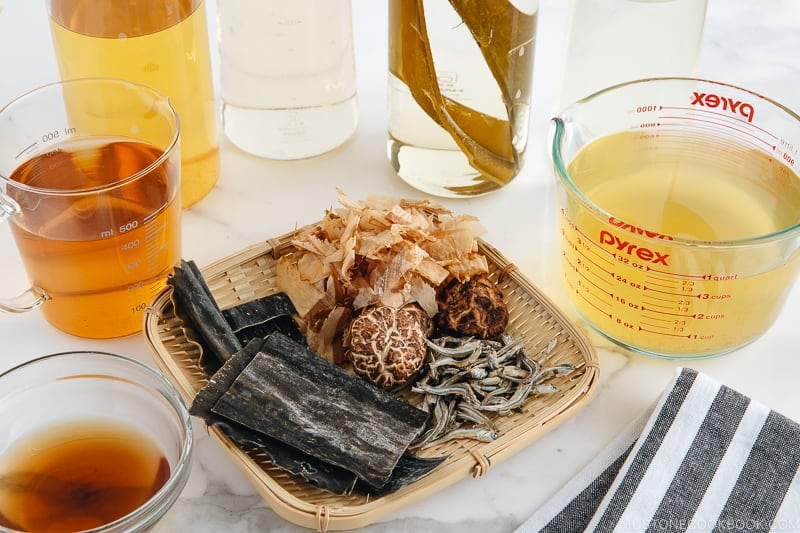
The Ultimate Dashi Guide
Dashi plays an important role as a flavor enhancer in Japanese cooking, so you don’t need to season the food with too much salt, fat, and sugar. Rich in minerals and other vitamins, dashi is considered a healthy ingredient in our daily diet.
There are six different types of dashi you can use in Japanese cooking, including vegetarian and vegan dashi (*).
- Awase Dashi – a stock made from a combination of dried kelp + bonito flakes
- Kombu Dashi * – a stock made from dried kelp
- Katsuo Dashi – a stock made from dried bonito flakes
- Iriko Dashi – a stock made from dried anchovies/sardines
- Shiitake Dashi * – a stock made from dried shiitake mushrooms
- Vegan Dashi * – a stock made from dried shiitake mushrooms and kombu
If you are new to different types of dashi, check out my Ultimate Dashi Guide.
Wish to learn more about Japanese cooking? Sign up for our free newsletter to receive cooking tips & recipe updates! And stay in touch with me on Facebook, Pinterest, YouTube, and Instagram.
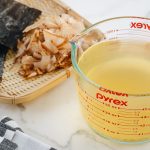
Awase Dashi (Japanese Soup Stock)
Video
Ingredients
- 1 piece kombu (dried kelp) (10 g; 4 x 4 inches, 10 x 10 cm per piece)
- 1 cup katsuobushi (dried bonito flakes) (packed; 10 g)
- 4 cups water
Instructions
Before You Start…
- Sometimes life happens and you just don‘t have 20 minutes to make dashi from scratch. On those occasions, you can use a Dashi Packet or Dashi Powder.
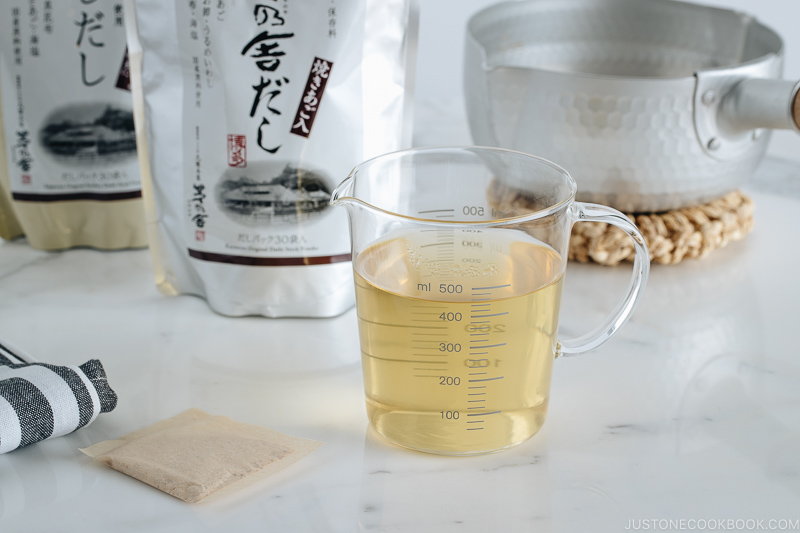
- Gather all the ingredients. Most Japanese recipes would say to gently clean the kombu with a damp cloth. However, these days, kombu is quite clean, so just make sure it doesn't have any mold spots and it‘s ready to use. Do not wash or wipe off the white powdery substance, as it has lots of umami.
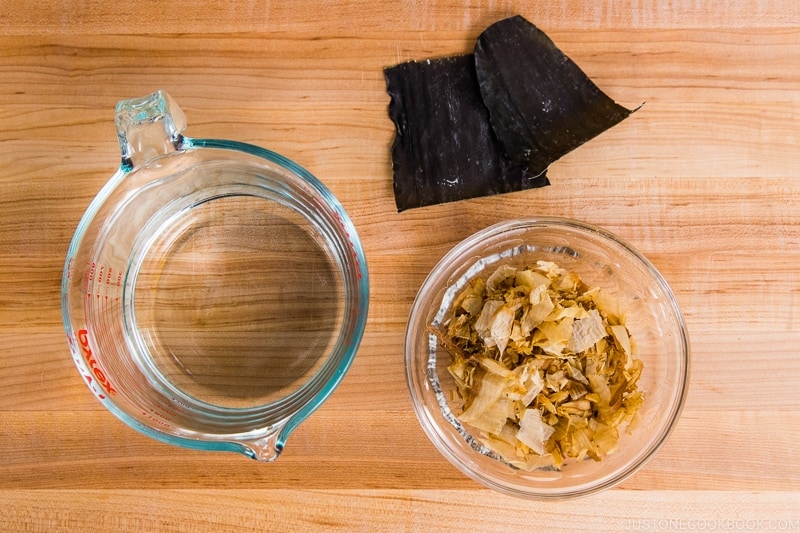
- Make several slits in 1 piece kombu (dried kelp) to release more flavor.
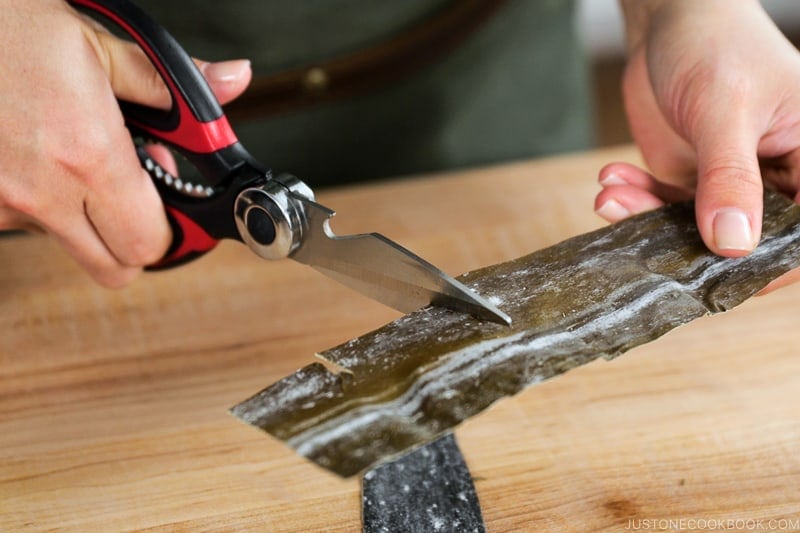
To Make the Cold Brew Kombu Dashi Ahead of Time (Optional)
- Put 4 cups water and the kombu in a large bottle and let it steep on the counter for 2–3 hours in the summertime and 4–5 hours in the wintertime. You can also cold brew the kombu dashi overnight in the refrigerator.
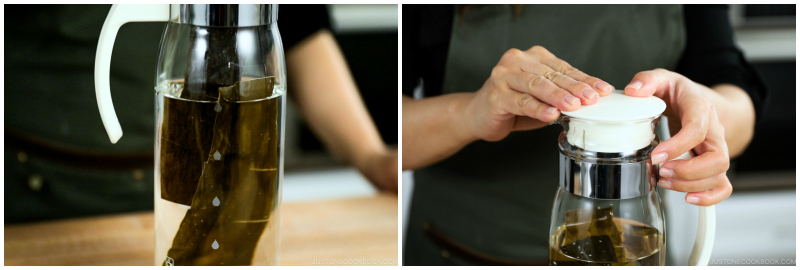
To Make the Awase Dashi
- Add the kombu and water to a medium saucepan. If you have cold brew Kombu Dashi (previous step), add the Kombu Dashi and hydrated kombu to the saucepan.
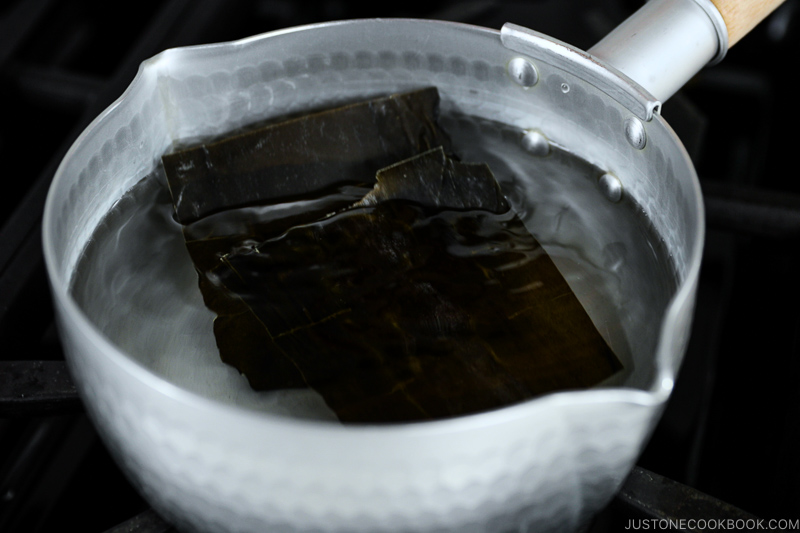
- Turn on the heat to medium low and slowly bring to almost boiling, about 10 minutes.
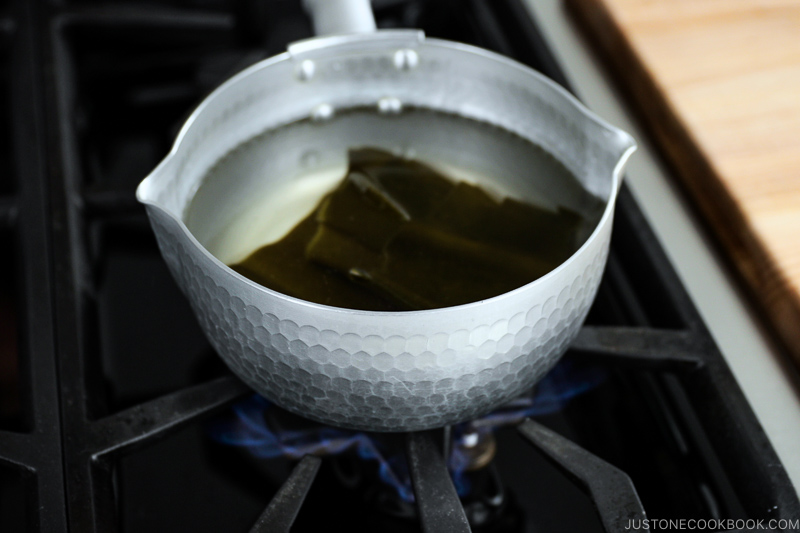
- Meanwhile, clean the dashi by skimming the foam and debris from the surface.
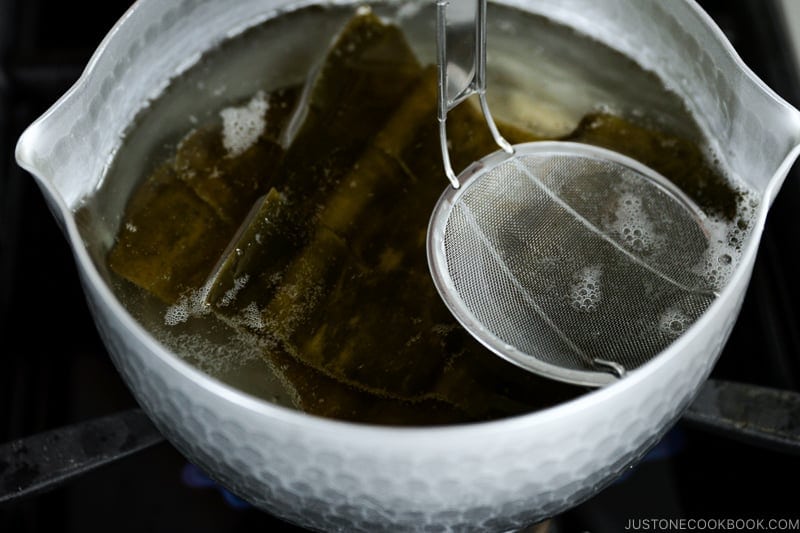
- Just before the dashi starts boiling gently, remove the kombu from the saucepan (discard or repurpose in other recipes—suggestions follow). If you leave the kombu in the saucepan, the dashi will become slimy and bitter.
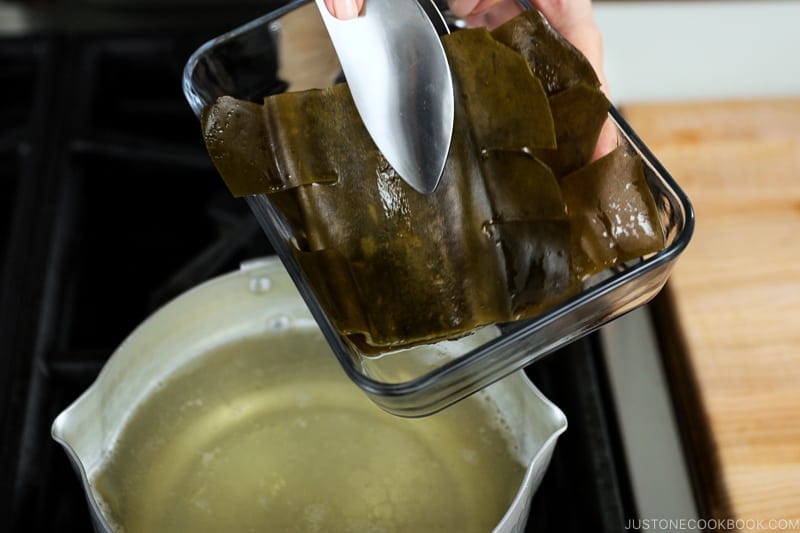
- Add 1 cup katsuobushi (dried bonito flakes) and bring it back to a boil again.
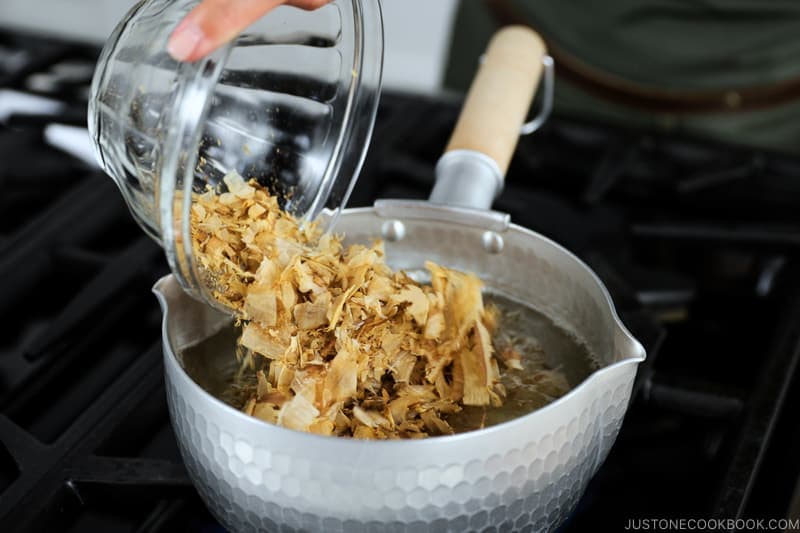
- Once the dashi is boiling, reduce the heat, simmer for just 30 seconds, and turn off the heat.
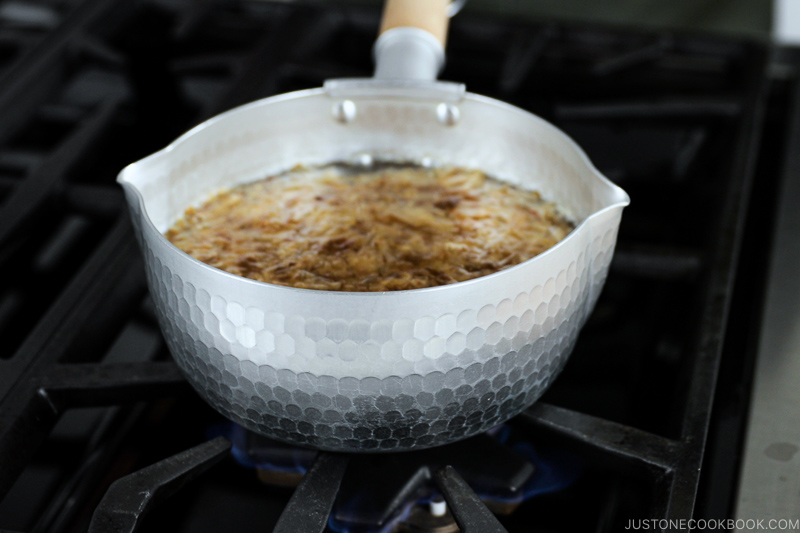
- Let the katsuobushi sink to the bottom, about 10 minutes.
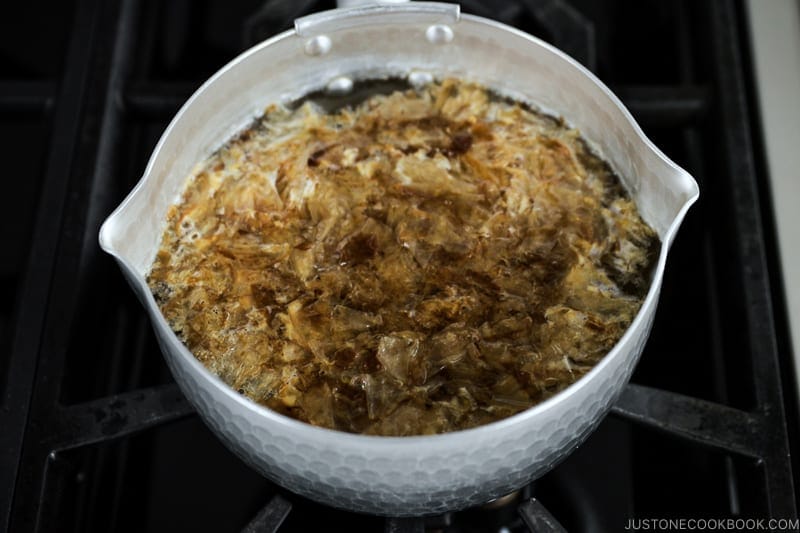
- Strain the dashi through a fine-mesh sieve over a bowl or measuring cup. Reserve the katsuobushi and repurpose it; see the suggested recipes that follow. The Awase Dashi is ready to use.
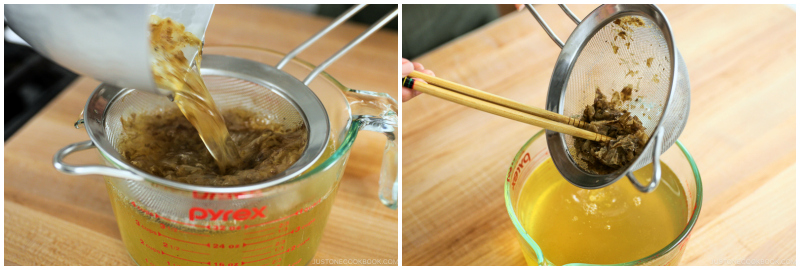
To Store
- If you are not using the dashi right away, store the dashi in a bottle or mason jar and keep it in the refrigerator for 3–5 days or in the freezer for 2 weeks.

What to do with the spent katsuobushi and kombu?
- Save the spent kombu and katsuobushi in an airtight container and store it in the refrigerator for a week or in the freezer for up to a month.
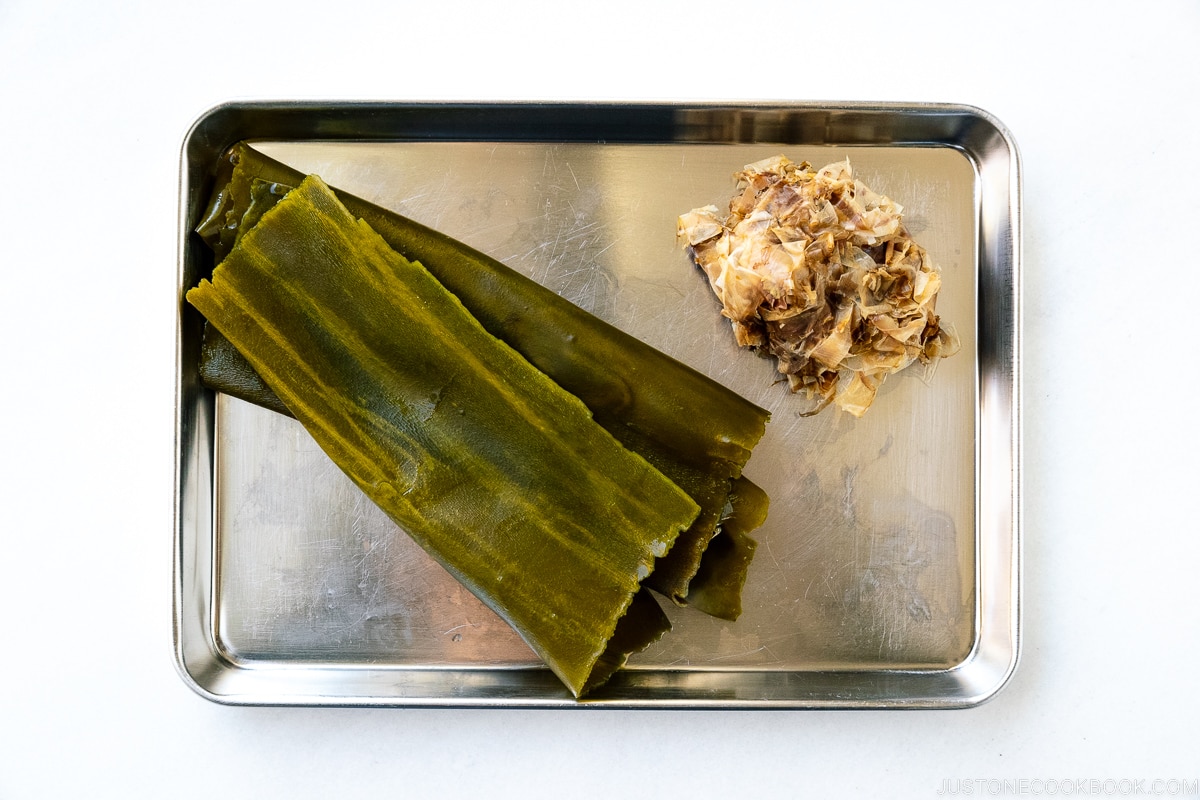
- With the spent kombu, you can make Simmered Kombu (Kombu Tsukudani).
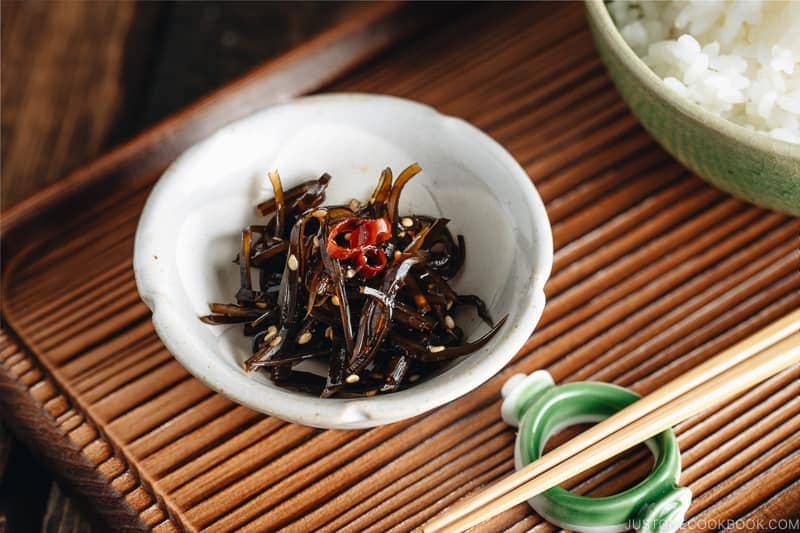
- You can also make Homemade Furikake (Rice Seasoning).
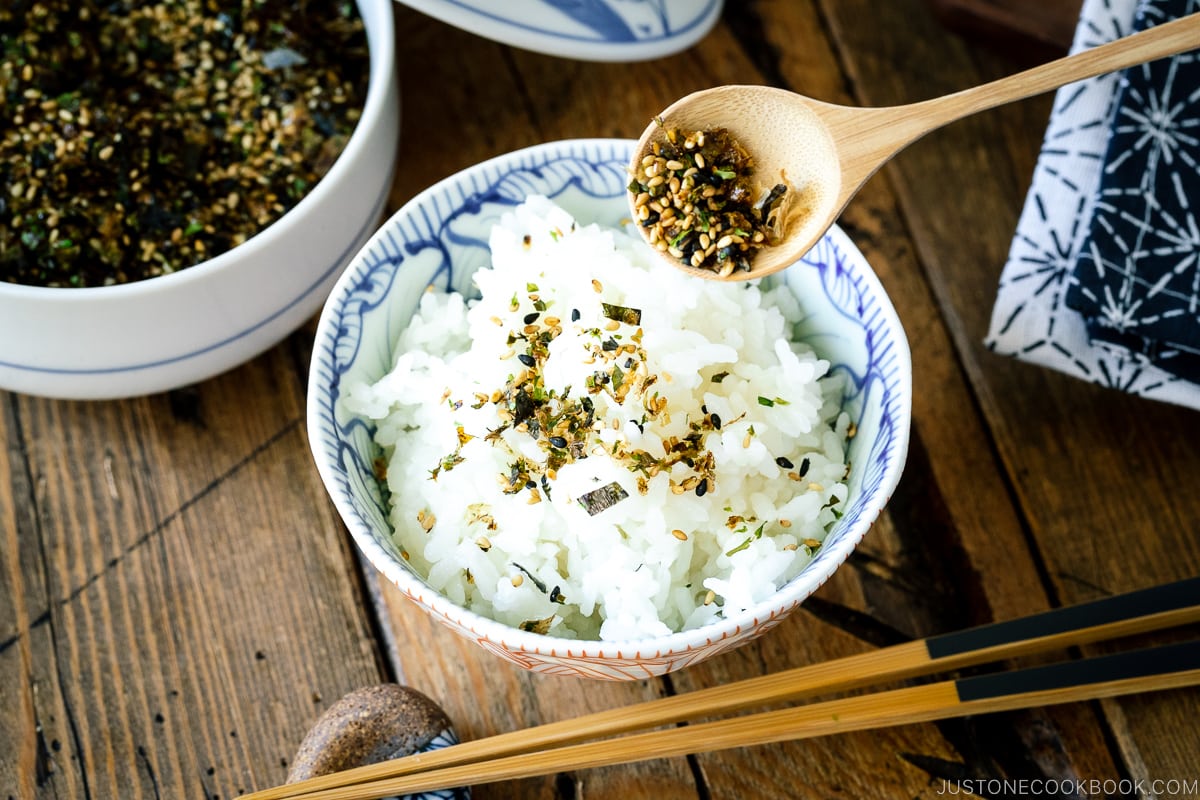
Optional: Niban (Second) Dashi
- In a medium saucepan, put 2–4 cups* of water and previously used kombu and katsuobushi from making the first dashi. Bring it to a boil over medium-low heat. *2 cups would make a stronger dashi.
- Remove the kombu just before the liquid comes to a boil, then lower the heat, and cook for 10 minutes, skimming occasionally.
- Add an additional ½ cup (5 grams) of fresh katsuobushi and turn off the heat.
- Let the katsuobushi sink to the bottom and strain the dashi through the fine-mesh sieve.
Equipment
Nutrition
Editor’s Note: This post was originally published in January 2013. The images and content have been updated in April 2019.
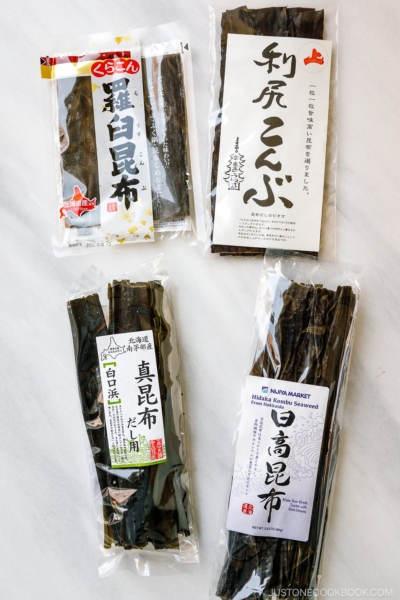
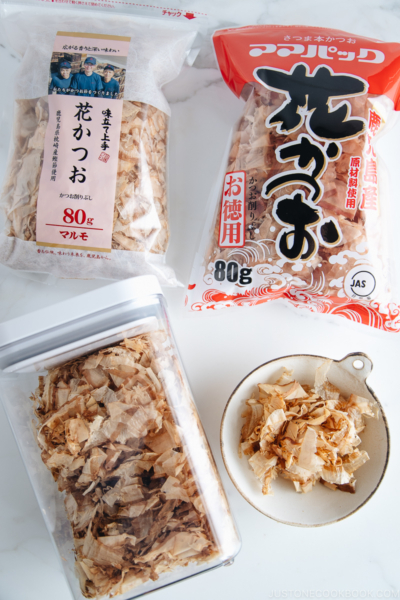
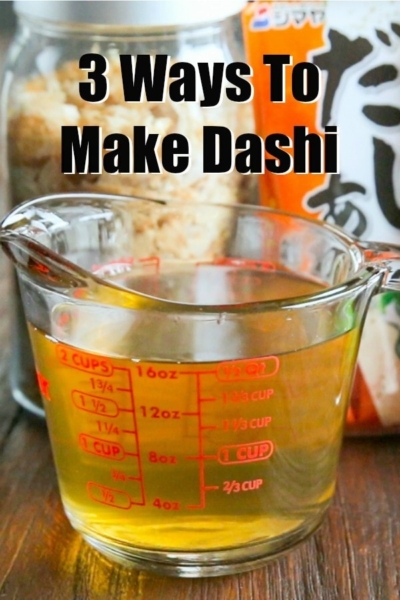
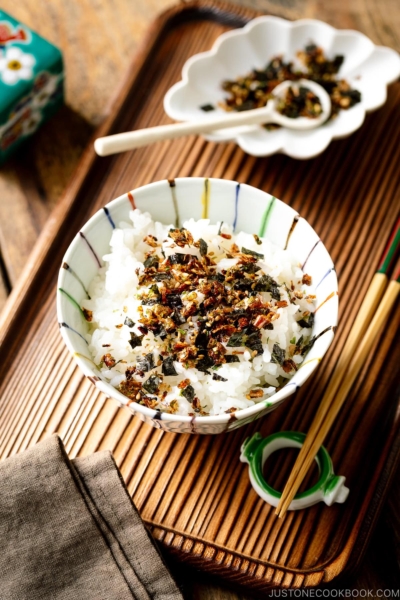




Can I substitute dried shrimps for the bonito flakes?
Hi Lisa! Thank you for trying Nami’s recipe.
For Japanese dishes, shrimp may have a flavor that is too strong. If you are looking for a substitute, we recommend using shiitake mushrooms, kombu, or niboshi.
You can learn more about these ingredients here:
https://www.justonecookbook.com/dried-bonito-flakes-katsuobushi/
https://www.justonecookbook.com/iriko-niboshi/
Hope this helps!
Hello, Nami-san! I love your recipes! 🤩🤩
I want to introduce japanese cuisine to one of our friends, it’s a bit of a challenge though, because she is severely allergic to anything sea-related (seafood, fish AND seaweed).
Can you suggest any acceptable alternative for dashi? Most of our favorite recipes includes it and I’m trying to work my way around it and still taste Japanese-like 😅
Hi, Agnieszka! Thank you for introducing Japanese food to your friends! 🥰
Dashi can be made with Shiitake mushrooms, and we hope it works out well for your friend. Here is the link to the recipe.
https://www.justonecookbook.com/shiitake-dashi/
Enjoy cooking!
Hey dear JOC-team, I made awase-dashi alot of times, exactly as described in your recipe. For me, the katsuo are way too dominant, very fishy, which I dislike. So I got used to made the kombu + shiitake dashi. Now a friend of mine bought me instant (katsuo+kombu) dashi (Dashi no Moto, Shimaya), which is, surprisingly, very delicious. It has the perfect balance of katsuo and kombu. Also I noticed, that it coniains salt. So, what can I do, to reproduce the taste of this instant dashi? Less katsuo? Add salt (which I never read on any homemade dashi-recipe)? Maybe you have a clue for me, why my dashi tastes so fishy. Thank you in advance! :3
Hi, Faye! The fishy taste could be due to the Katsuobushi you used.
This post covers several varieties. You can also lessen the amount if that suits your preferences.
https://www.justonecookbook.com/dried-bonito-flakes-katsuobushi/
We hope this information helps!🤗
Thank you Naomi! I tried the Kombu + Shiitake dashi (cold over night, then almost boil) and boiled it with a just a little katsuo (3 g) at the very end. Now it has a full umami and a light fish taste. Great! Thank you!
Hello, Faye. I’m delighted you’ve discovered the perfect Dashi balance for your taste! 🥰 Thank you for sharing your experiences!
Hello Nami ^^
I always follow your recipes in the dark
We did with my fiancé homemade oden last night 🙂
My question was how to make more stronger dashi ?
I used kombu and katsuobushi and follow for make the oden broth however is was blank taste or let’s say very light.
I did a brew left over night specially for the oden 🍢
Hello, Bibi! Thank you very much for trying Nami’s recipes.
If you prefer a stronger Dashi, we recommend increasing the amount of Kombu and Katsuobushi when making it. It will bring out more flavor in the Dashi.
We hope this helps! 🤗
Hi Namiko
My kombu weighs half than yours for a 10x10cm piece. Should I go by weight or measured piece?
Joan
Hello, Joan. Thank you for trying Nami’s recipe.
We recommend using weight measurements. However, different varieties of Kombu have slightly different flavors. Please feel free to alter the amount of Kombu to your preference.
Here is a post about Kombu: https://www.justonecookbook.com/kombu/
We hope this helped!
Is there katsuobushi flakes available in Mongolia? I appreciate if you respond thanks.
Hello there! Thank you for reading Nami’s post.
You can find Katsuobushi in your local Asian or Japanese market, or you can purchase it from online stores.
https://www.justonecookbook.com/online-shops-for-asian-ingredients-goods/
We hope this information is helpful!
thank you for such a wonderful and informative website! i LOVE japanese food and i’m grateful to you for helping me become proficient (or at least passable) a making it at home!
if i reduce this, say by half, would it make a good concentrate for making dashi broth? i’m thinking about doing so and freezing them into cubes for making “instant” ramen later on.
Hi, Chris! Thank you for reading Nami’s post and for your kind feedback!
You may add more ingredients to the original amount of water to make concentrate Dashi. You can add up to 80 g of Katsuobushi every 4 cups. Please feel free to adjust the amount to your liking. We hope this helped!
Hello! How many nights can you store Kombu in the fridge to soak? Is it best to use it immediately the next day?
Hello, Riza! The cold brew can be left for up to 12 hours. After 12 hours, the Kombu starts releasing too much alginic acid into the Dashi, resulting in slimy Dashi.
More information about storing Kombu dashi can be found here.
https://www.justonecookbook.com/how-to-make-kombu-dashi-vegetarian-dashi/
We hope this was helpful!
Hello, Should i let the kombu and katsuobushi from the dashi fully dry before storing in the fridge? Thank you!
Hi Mel! You don’t have to completely dry them, but you can squeeze out the dashi.
We recommend that you use them as soon as possible.
Happy Cooking!
Can I make cold brew 2nd dashi (using previously boiled kombu)?
Hello, Teresa. Thank you for taking the time to read Nami’s message.
We recommend not brewing the cold brew (2nd Daashi) after the Kombu has boiled. Instead, simmer it for 10 minutes to produce a second dashi with boiled Kombu. However, the flavor will be weakened, and you may want to add more dashi ingredients like Shiitake or Katsuobushi.
We hope this helps!
Hi Nami! Recently I’ve been making bone broth in my Instant Pot using the slow cooker function – it’s very good for collagen! I have been adding instant awake dashi packs to it to make miso soup, and the umami from the beef bones pairs really well. I was wondering if I could implement the traditional dashi recipe to the bone broth. Do i add the kombu as it’s slow cooking and the katsuoboshi when it’s done? Or do I add ready-made dashi to the slow cooker with the beef bones? Thank you
Hi Olivia! Oh, my family love oxtail broth with katsuo dashi (https://www.justonecookbook.com/oxtail-udon/). Kombu release umami slowly, but the temperature should not be high, that’s why you’re supposed to take it out before boiling. I forgot the exact temperature, but it’s like 80-90C range at max to get the best umami out of it. So you can start with cold brew, then heat it up until that temp. I don’t recommend slow cooking. If you’re going to strain your broth, adding the katsuobushi at the end makes sense, but don’t cook it as it gets bitter. For me, it’s much easier to make the broth separately and combine the two (so you can create a good ratio eventually). 🙂